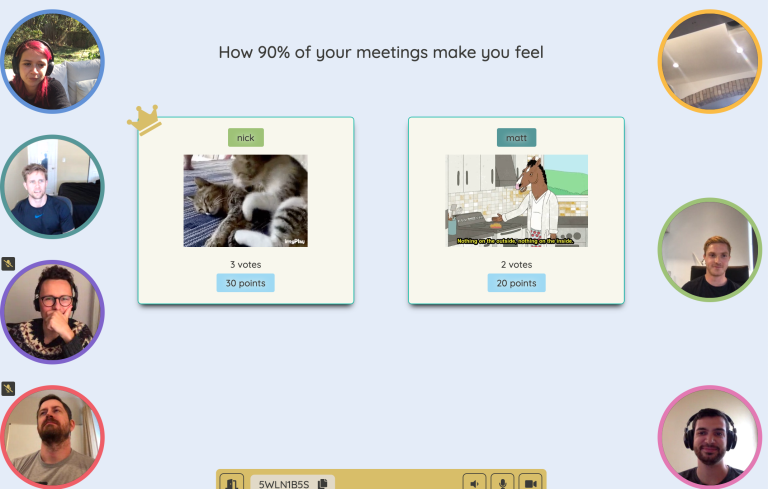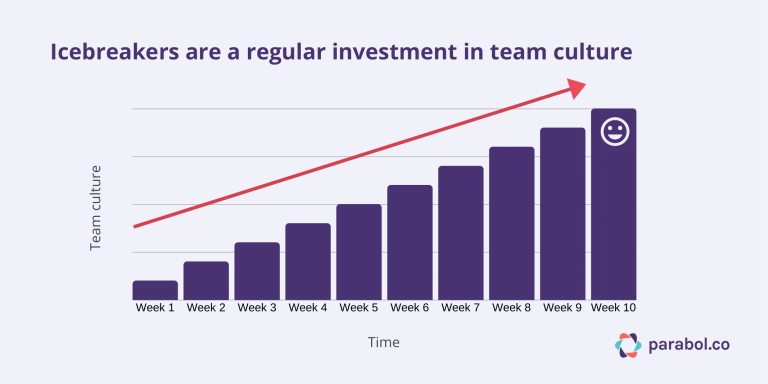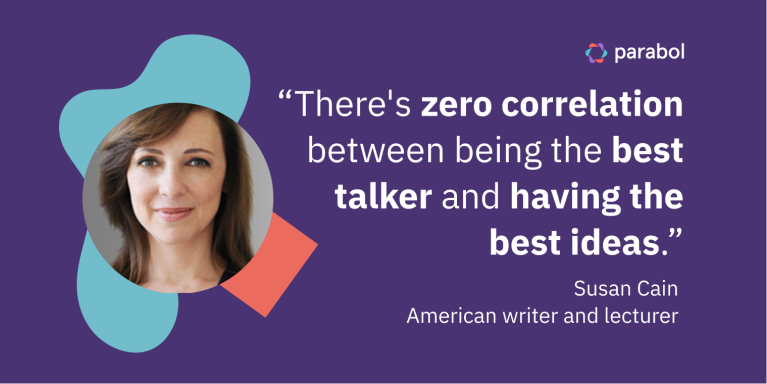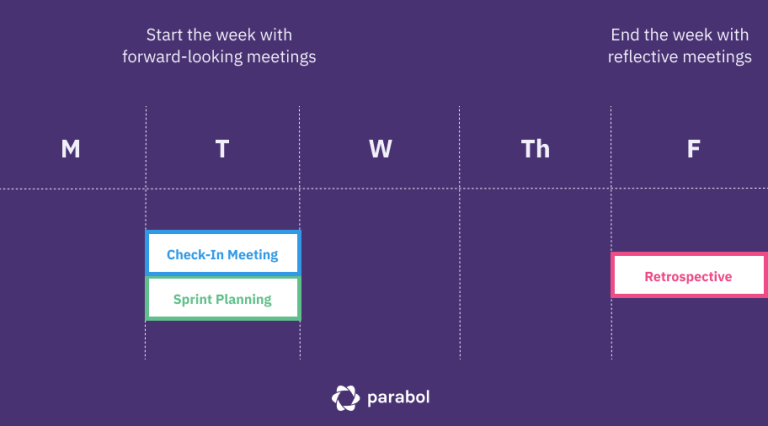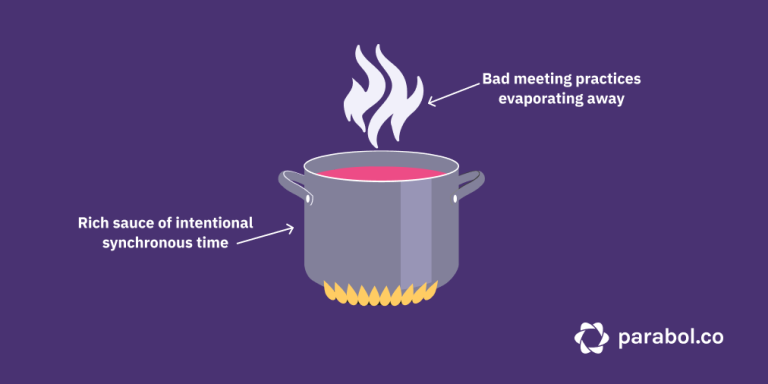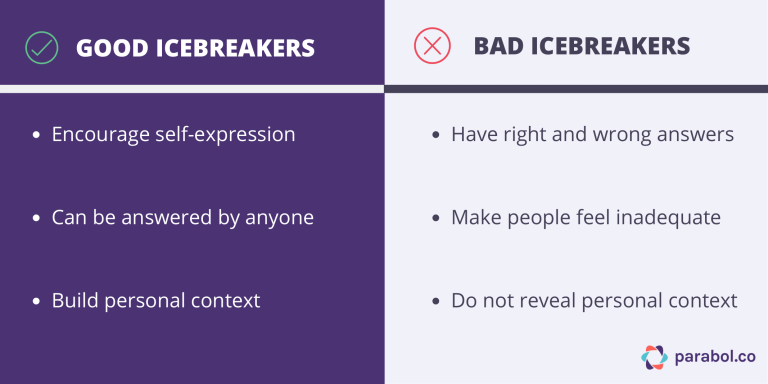How to Ask and Answer Great Icebreaker Questions

Whether it’s two truths and a lie, or being asked to state “an interesting fact about yourself”, there are some icebreakers that make your team die inside a little.
Not all icebreaker questions are equal. A bit like stand-up – do them wrong and you can fall flat on your face.
Our goal in this blog is to prevent that happening and give you the tools to run great icebreakers that help you build team cohesion.
By the end of this article you will:
- Know what makes a good icebreaker (and a not so good one)
- Know how to ask inclusive icebreaker questions that anyone can answer
- Be able to improve meeting participation with icebreakers
- Know how to answer an icebreaker like a pro
How to do better icebreakers
We’ve all answered icebreaker questions in the past, often reluctantly.
But how can you make sure your social check-in or icebreaker activity is able to effectively prime your team, build relationships and form a culture?
That may sound daunting, but we’ve got four tips to help you run icebreakers and social check-ins your team will love.
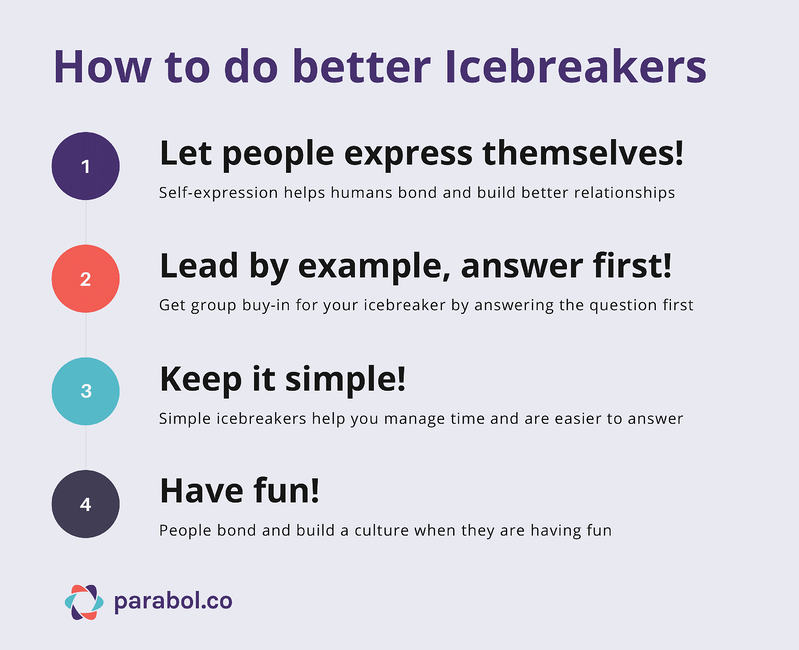
1. Choose icebreaker questions that allow for self-expression, don’t have a wrong answer and anyone can answer
Many icebreaker questions fail to get team buy-in and wind up in an awkward silence.
That’s because not all questions are up to the task of breaking the ice.
If you want your team to engage in the check-in, icebreaker questions need to capture their interest.
There’s a quick sense check you can do to check if your questions are good enough.
Before asking your icebreaker make sure that:
- Everyone can answer it
- It allows for genuine self-expression
- It doesn’t have a right or wrong answer
Self-expression in social check-ins is vital because that’s what promotes human bonding. Self-expression also makes icebreakers fun and fosters connection that leads to team members feeling safe expressing concerns in the group.
You don’t want to ask a question that has a right or wrong answer and risks someone feeling bad about themselves.
Asking factual questions risks making people feel stupid or inadequate if they get the question wrong, which will negatively impact how much people contribute.
- Make sure to avoid asking yes/no questions. You’re not going to learn much about your colleagues if everyone is answering icebreakers with a simple yes or no. Instead, encourage your team to offer anecdotes or short explanations in their responses that provide more personal context.
- Be mindful of how personal questions are and what knowledge you assume team members have. Some people may feel uncomfortable bringing their personal lives into work, so start with less personal questions until you have some common ground already established.
- Keep it accessible! If your question is so niche that only a few people can answer it, then only those few people will feel included, at the expense of others. If you’re going to ask niche questions, make sure everyone feels okay about admitting they don’t know what something is.
Remember that your icebreaker round is meant to prime your team to contribute and be open. You don’t want to accidentally prime them to feel their opinion doesn’t matter or isn’t good enough.
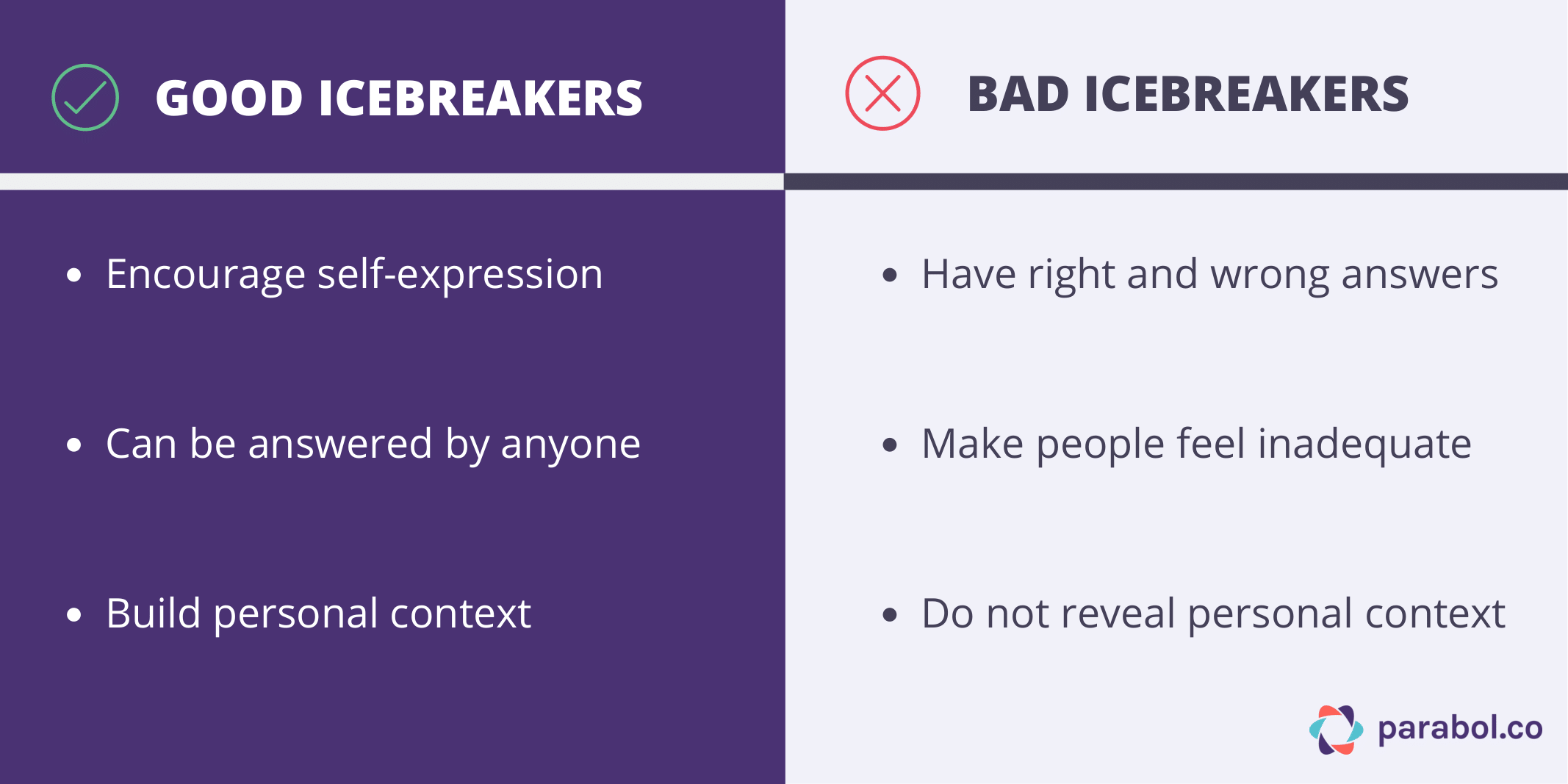
✅ Good icebreaker question: What’s something new or interesting you’ve learned recently?
- Allows for self-expression
- It doesn’t have a right or wrong answer
- Anyone can answer it
- Encourages sharing of useful information
- Helps build personal context
❌ Bad icebreaker question: Who is your favorite mid-90s sports player?
- There could be right and wrong answers
- Not everyone may be able to answer it
- Does not facilitate genuine self-expression
- Does not build personal context
If you need some inspiration, we have a list of 200+ great icebreaker questions to try out.
2. Answer your own icebreaker question first to create a safe space
It’s not just the question that matters, but how you ask it.
As a meeting facilitator answer your own social check-in question. If the team is pretty new and not comfortable with one another, answer first to get the ball rolling.
As a meeting facilitator your goal is to get everyone to open up and express themselves. And you’ll only be successful if everyone in the room feels safe.
Psychological science tells us that making yourself vulnerable is a fast-track way of building trust and helping others open up. If you can answer an icebreaker first, you lead by example and create the psychological safety net needed for others to answer honestly and openly.
Your job is to create a relaxed and safe environment. But when you’re the one setting the icebreaker questions, there’s a fine line between openly asking a question and sounding like an interrogator. So you’ll want to be mindful of your tone as well!
3. Keep it simple to keep the conversation moving
Something simple like an icebreaker can become very complicated, very quickly. Remember that icebreaker question ‘two truths and a lie’? It can be pretty time consuming…
Not only does it require every team member to come up with three pieces of information, but it encourages your team to develop value judgments about each other. Is Steve really the kind of guy who listens to heavy metal? Is Laura the type of person who rides horses?
Those kinds of judgements can offend your colleagues and damage team relationships.
You want to make sure your social check-in is simple, fun, informative, and free of judgement!
Keeping your icebreakers simple also helps you keep a hold on the time. You want to spend no more than 5-10 minutes on your check-in. With teams that are comfortable with one another, you’ll find that people talk more, and stretch out the check-in round. With larger teams, each additional reply adds time.
To keep the time with larger or more talkative teams, ask questions that participants can answer with one word or expand if they choose.
Simple icebreaker questions for large or talkative teams:
- If you could travel anywhere, what country would you go to?
- What animal best describes your mood today?
- If you could have any superpower, which would you choose?
- What’s the strangest food you’ve ever eaten?
- Which colour sums up your feelings today?
It can be easy to run over when you’re having fun getting to know each other, but keeping your question simple should keep you on time.
It’s also about simply getting everyone to say something.
Think of icebreakers a bit like a Rorschach test. Your colleagues don’t need to rack their brains deciding “is my mood more aardvark or axolotl today”? They just need to say something. Anything.
Good icebreakers can be answered without demanding cognitive strain. The purpose of an icebreaker is to warm everyone up, not burn everyone out. After all, you want to save your team’s brain power for the central questions and challenges you’re tackling in your team meeting.
If someone in your team seems nervous about answering the question, you can always come back to them at the end of the round. They might feel more confident after hearing everyone else’s answers.
4. Have fun so you can build better relationships and a stronger culture
The best icebreaker questions are fun. Above all, they’re a time for you to come together with your team and bond. This time is especially sacred if you’re working remotely or running a fully distributed team.
You can make sure your icebreakers are fun by thinking about:
- Setting a positive tone from the very start
- Letting team members submit their own icebreaker questions
- Asking your team for feedback on the process
The positive benefits of social check-ins should extend beyond the context of the meeting. You want social check-ins to help your team members connect with each other outside the meeting and build complex relationships built on points of common interest.
Building a team culture isn’t just about finding your groove. It’s also about building cultural and social reference points that help you gel with each other. Whether it’s some kind of in-joke, nicknames, or analogies based on books, movies, or other icebreaker answers! All of these things make people feel they are part of something meaningful and fun that they have helped to create.
When we’re having fun we’re more expressive and more open. Our conversation flows more naturally and we enjoy our time with each other.
Life’s too short for more boring meetings, so make sure to have some fun in your icebreaker round.
Conclusion
You’re ready to start investing in your team relationships and culture!
Let’s quickly recap all the key points we discussed.
- Icebreakers are a time for you to connect personally with your team members before you start your meeting.
- Make sure to choose great questions that everyone can answer and make sure you’re leading by example, answering your question first to create a safe space. Here’s a list of funny icebreaker questions to pick from!
- Remember to keep your icebreakers short and simple.
- Pick questions that encourage thoughtful self-expression, so people really get to know each other better. Make them inclusive and stray away from topics that might be too personal if you’re a new team.
- Have fun! Because people open up and build better relationships when they’re having a good time!
Good luck running your next icebreaker.
Need some inspiration for your next meeting?
Check out our icebreaker resources here:

